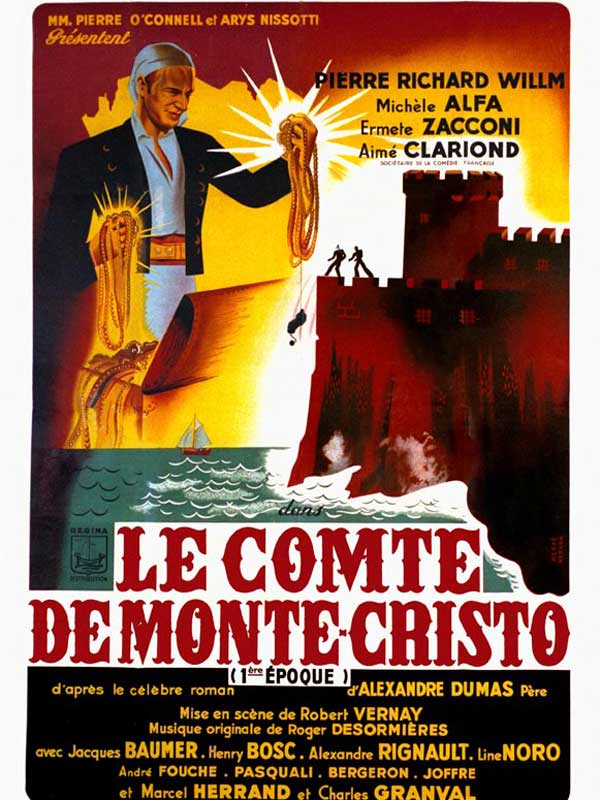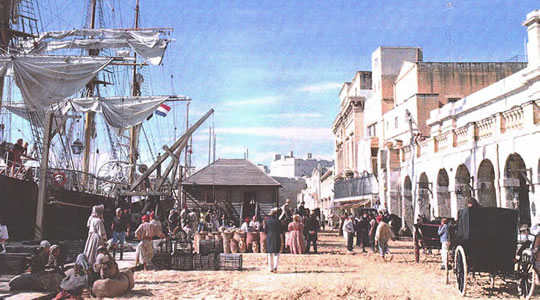
This disagreement is the only one that has ever taken place between the count and countess, who are still as much united, although married more than twenty years, as on the first day of their wedding.” The picture seems to have a malign influence, for my mother rarely comes here without looking at it, and still more rarely does she look at it without weeping. Excuse my talking of family matters, but as I shall have the honor of introducing you to the count, I tell you this to prevent you making any allusions to this picture. de Morcerf, whose portrait, by Gros, I will also show you. It is different with my mother, who paints exceedingly well, and who, unwilling to part with so valuable a picture, gave it to me to put here, where it would be less likely to displease M. de Morcerf is one of the most assiduous peers at the Luxembourg, a general renowned for theory, but a most mediocre amateur of art. She doubtless intended giving him an agreeable surprise but, strange to say, this portrait seemed to displease my father, and the value of the picture, which is, as you see, one of the best works of Léopold Robert, could not overcome his dislike to it. The countess had this portrait painted during the count’s absence. This costume is a fancy one, it appears, and the resemblance is so great that I think I still see my mother the same as she was in 1830. She had her portrait painted thus six or eight years ago. You do not know my mother she it is whom you see here. “Ah, monsieur,” returned Albert, “I would never forgive you this mistake if you had seen another picture beside this. It was the portrait of a young woman of five or six-and-twenty, with a dark complexion, and light and lustrous eyes, veiled beneath long lashes.Īlbert then explains that the portrait is his mother, taken 6-8 years ago: In Chapter Forty-One Edmond visits the de Morcerf house and sees a portrait of Mercédès: Thus, at this point we have established that Fernand is about a year older than Edmond, who in turn is about three years older than Mercédès.įast-forward about forty chapters, and Mercédès is now married to Fernand (Count de Morcerf) and is the mother of Albert, while Edmond has become the Count of Monte Cristo. What else can a strapping chap of twenty-one mean with a fine wench of seventeen?” “Really and you think this cousin pays her attentions?” “Well, every time I have seen Mercédès come into the city she has been accompanied by a tall, strapping, black-eyed Catalan, with a red complexion, brown skin, and fierce air, whom she calls cousin.” Do you understand, father? Only imagine me a captain at twenty, with a hundred louis pay, and a share in the profits! Is this not more than a poor sailor like me could have hoped for?”Īt the end of Chapter Two, Mercédès (Edmond's bride) is described as being 17 years old, and her cousin (Fernand) as being 21 years old: The good Captain Leclere is dead, father, and it is probable that, with the aid of M.

“God forgive me,” said the young man, “for rejoicing at happiness derived from the misery of others, but, Heaven knows, I did not seek this good fortune it has happened, and I really cannot pretend to lament it. In Chapter Two (which is the same day) he himself confirms that he is 20 years old:


Here he is estimated to be 18-20 years old. He was a fine, tall, slim young fellow of eighteen or twenty, with black eyes, and hair as dark as a raven’s wing and his whole appearance bespoke that calmness and resolution peculiar to men accustomed from their cradle to contend with danger.

When Edmond Dantès is first described in Chapter One, right when the story begins, his age is given as follows: (Note: all emphases in quoted passages below are mine.)Ĭontinuing the theme of confusing mathematics in The Count of Monte Cristo, here is another example that stymies me:


 0 kommentar(er)
0 kommentar(er)
